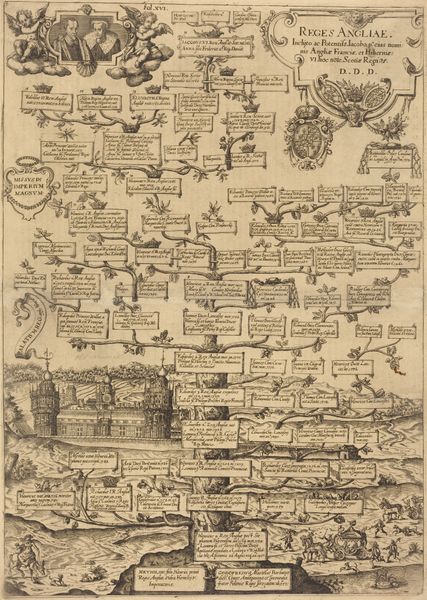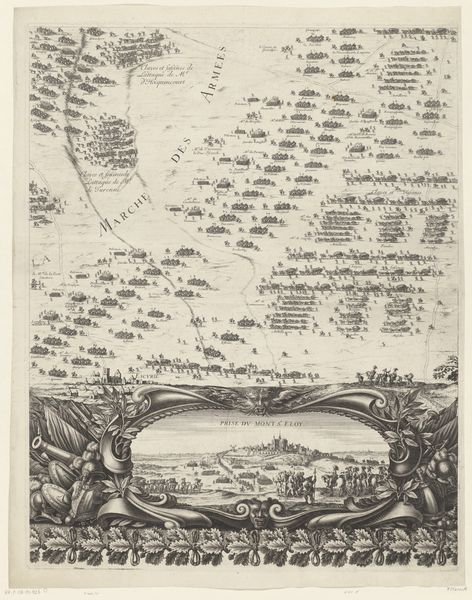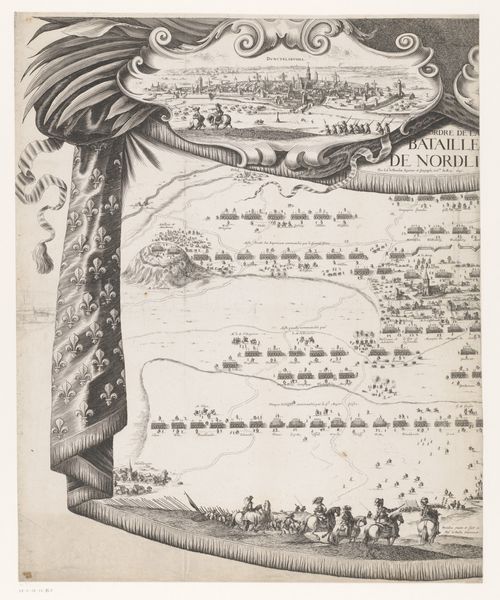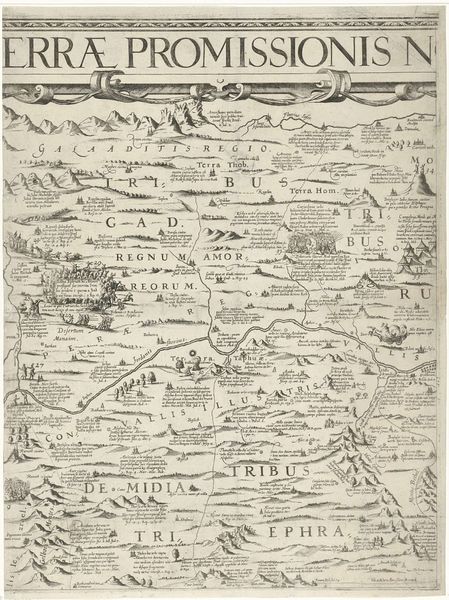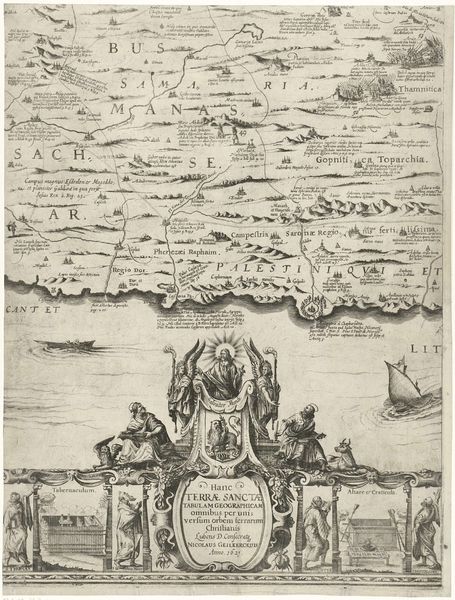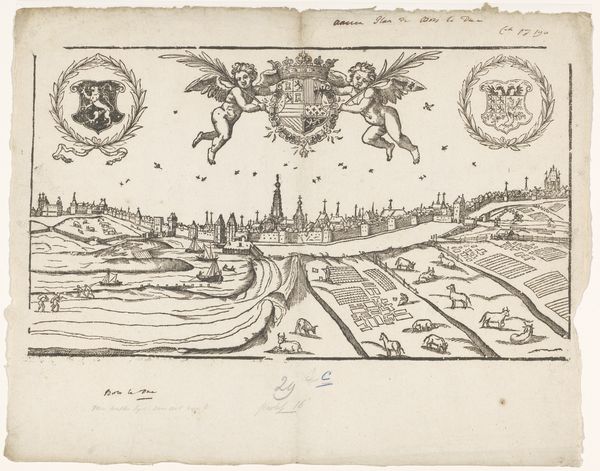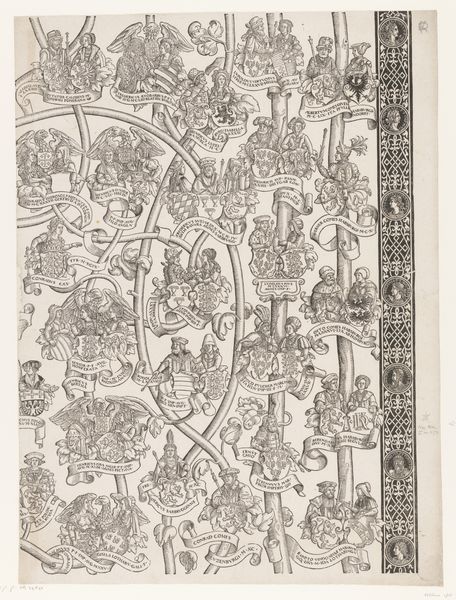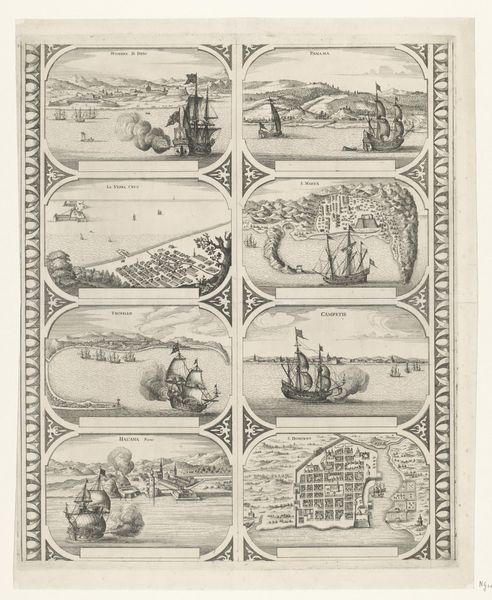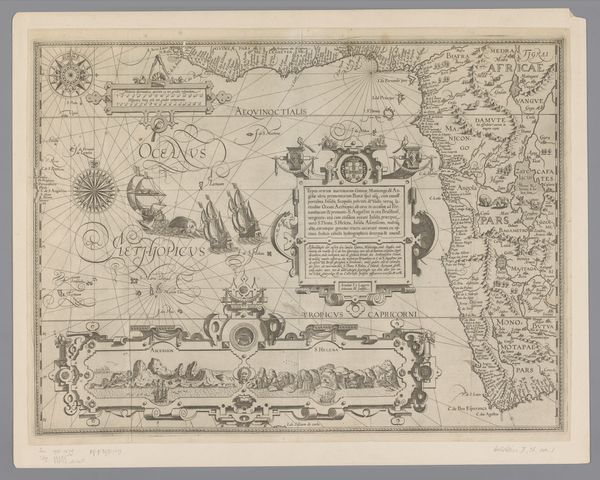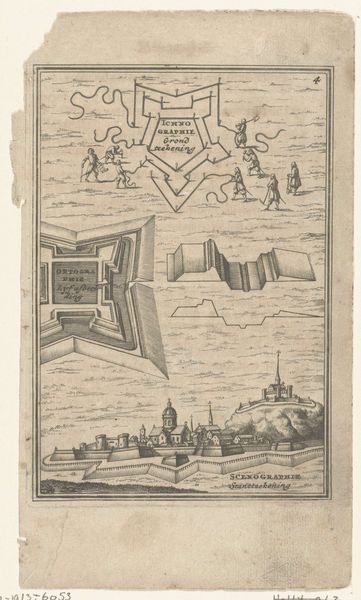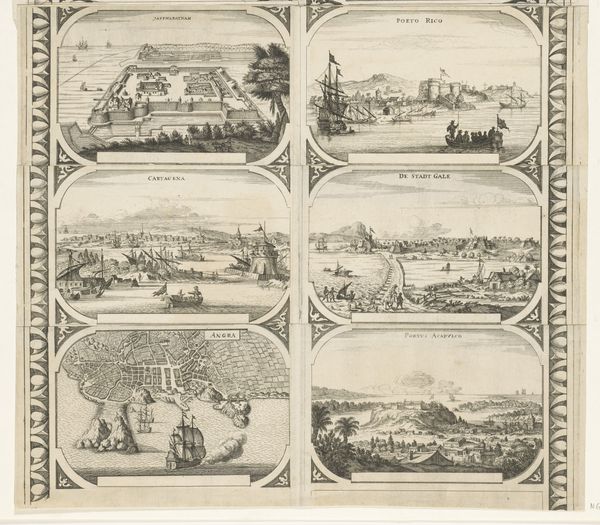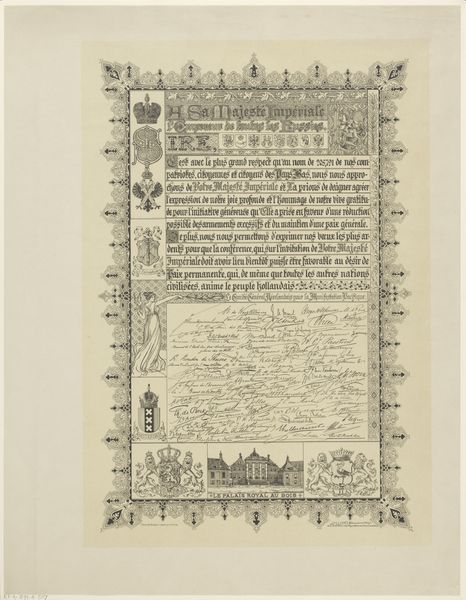
Stamboom van de graven en hertogen van Luxemburg, 1050-1476 1606 - 1608
0:00
0:00
drawing, print, ink, engraving
#
drawing
# print
#
old engraving style
#
ink
#
line
#
history-painting
#
engraving
Dimensions: height 395 mm, width 237 mm
Copyright: Rijks Museum: Open Domain
Historian: Well, here we have Dominicus Custos's "Family Tree of the Counts and Dukes of Luxembourg, 1050-1476," created between 1606 and 1608. It’s a print, an engraving to be precise, made with ink. Artist: It’s mesmerizing, isn't it? So intricate. It almost feels like looking at the root system of some grand, old tree itself—a little dry, maybe, but bursting with potential for untold stories. Historian: Absolutely. These genealogical charts were powerful tools. It visually asserted lineage and legitimized claims to power in a time when noble families were constantly vying for influence. Lineage was everything. Artist: It's more than just names and dates, isn't it? See how each little portrait seems to gaze out with a different intensity? They all seem so important somehow. They breathe this strange sense of personal relevance to what would otherwise be a dusty timeline. Historian: Exactly! Custos strategically interweaves portraiture to not just map relations, but also emphasize the individual personalities of key figures within the Luxembourg dynasty, reminding viewers of their achievements. Artist: It almost makes me want to write poems for each one. And at the base? A vision of Luxembourg city? Is that a claim to place, not just to blood? Historian: Precisely! It’s anchoring their noble claims geographically, stating, "This is our land, look upon its bounty!" It cleverly marries ancestry with a very physical territory. The choice of engraving as a medium too allows for mass dissemination – a broad appeal, very publicly on display. Artist: I keep getting drawn into the level of detail. Look at those tiny little flourishes in the borders of each box, the little leafy branches that seem to tie the names together... there’s real artistry here. I feel a pull into the humanity *within* all the calculated power plays. Historian: Well, Dominicus Custos really created not only a record, but propaganda piece—a testament of the ambition that shaped European power for centuries, cleverly interwoven into the artwork we now see hanging peacefully in a gallery in the Rijksmuseum. Artist: It certainly leaves a grand, lingering taste of ambition and the echoes of power, doesn't it? It seems to echo on, beyond all the dates.
Comments
No comments
Be the first to comment and join the conversation on the ultimate creative platform.
